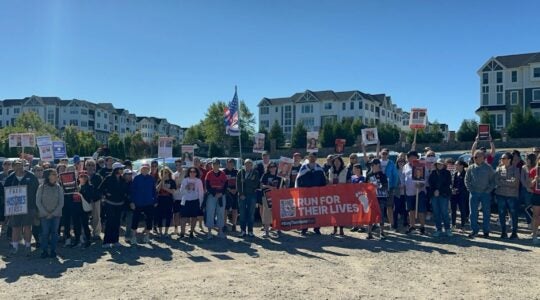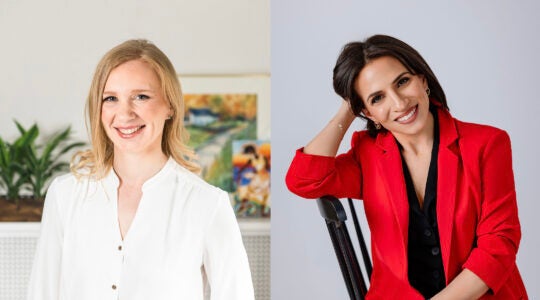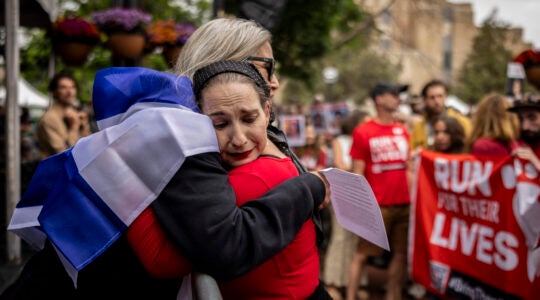When I was in high school, I read Joshua Foer’s “Moonwalking with Einstein: The Art and Science of Remembering Everything” and became obsessed with building what he calls memory palaces. They are a technique Foer describes that helped him to memorize ideas, lists or objects by associating them with visual locations. I liked the idea that I could bend the laws of physics and time to create a space entirely imagined but viscerally real. A space whose architecture and interior design is engineered to withstand the assaults of age, to weather any interference from an outside force.
The first palace I built helped me to memorize 30 digits of pi. I liked that only I could access this proprietary structure. Only I understood the “3-shaped” coat-rack and the sheepskin rug that resembled a decimal point. When my grandmother passed away, I made a memory palace of her old house on Long Island. Even once it was sold, I wanted to remember the way her laughter filled the loft upstairs and the sight of her tiny body bent over and watering the patio plants.
By using Foer’s memory trick, I learned how to make a place mine, how to make it sacred. I learned that spaces are so much more than wooden beams and kitchen tiles; they are memories, relationships, ways of forging meaning and filtering through feeling and time.
In my high school Bible class, I remember studying the innermost alcove of the ancient temple in Jerusalem, called the Holy of Holies, which was a place so special that even the High Priest could enter it only once a year. I remember thinking, “Of course!” What could be more divine than a small, intricately crafted room? In religion we devote a lot of energy to thinking about time, about the minutes that we spend, save, waste; but spaces shape us in ways we can’t always measure or even understand.
If my memory palace was the first space I ever owned, the first I ever lost was a pizza joint.
It was a Sbarro’s in downtown Jerusalem. It was my favorite place to eat out, because everything on the menu was junk food. My family ate dinner there one night in the summer of 2001. The restaurant was bombed just 12 hours later. Fifteen people were killed, one of them a pregnant woman. The intersection at Jaffa and King George shut down for days. Orthodox men came to bury the dead, sifting through the rubble to locate strips of charred human flesh.
For years after, the sight of a Sbarro’s would make my stomach clench. Passing the chain’s signature green and red lettering on 34th Street in Manhattan, I’d feel my muscles start to tense up. I’d try to inhale to steady my breath, and I’d get overcome by the noxious smell of melting cheese and the distant blare of a far-off Hebrew news announcer: Fifteen dead at Jaffa and King George. May their memories be a blessing. Baruch Dayan Emet.
I’ve been thinking this past week about the built environment of terror. I’ve been thinking about the way that violence can take hold of a space. Terror seizes lives, embeds in our news cycle and politics — but it also remakes our worlds, rearranging the brick and mortar of a building to make it physically, mentally, emotionally uninhabitable. Condemned.
When I heard the news about the shooting in Pittsburgh, I thought immediately — like so many Jews — of the synagogue I spent so much time in as a child. Every Saturday meant at least three hours in that overheated room in our Manhattan shul. It’s a space that holds a lot of my childhood: stumbling through Hebrew prayers, sneaking bits of Bundt cake from the kitchen, enduring the last hours of a Yom Kippur fast.
Reading the headlines about the 11 killed in Pittsburgh, I felt all that evaporate. I know that from now on each time I step into my temple I’ll feel my stomach clench. I’ll hear my breath quicken. I’ll wonder how thoroughly the security guard checked my bag. Probably many of my relatives and neighbors will do the same. Maybe some, in the recesses of mental memory, will hear gunshots.
I have to believe that from the fear and the rubble we can construct something new.
If faith and memory imbue a space with the divine, terrorism does the opposite. It stains the floor with blood, both real and imagined. It wrenches a place from itself, remakes it in a new and darker image.
Since the Pittsburgh shooting, I’ve seen a social media post circulate that lists all the public spaces now marked with histories of mass violence: movie theaters, churches, synagogues, clubs, classrooms. It’s a graphic that reads: “We can’t go to the movies, we can’t go to a concert, we can’t go to school, so we have to go to the polls.” The first time I read it, getting dressed to go to work in the morning, I felt a sense of dread about leaving home. Even in the context of a well-intentioned meme, the language felt so resolute: These are the places we can’t go now. All the memory palaces blocked off with yellow caution tape.
I don’t think that terror has the power to fundamentally undo a space. I think of the way that New York City has used art and architecture to remake the meaning of Ground Zero. It’s no longer entirely a commercial center, but neither is it defined entirely by loss of life. With the introduction of a national museum and memorial — including its reflecting pools, white oaks and parapets that bear the victims’ names — those few blocks of lower Manhattan now tell a more complex story, one of heroism and rebirth.
As I read the laundry list of public places in America that are now tainted, I wonder what we’ll pull from the wreckage. I have to believe that with new memories and the steely force of time, we’ll be able to wash the windows of our palaces and crack open the doors. I have to believe that from the fear and the rubble we can construct something new.
Emma Goldberg is a writer and activist based in Brooklyn. Her writing has appeared in The New York Times, USA Today, Salon and ESPN. She works at the start-up initiative Longpath.
The New York Jewish Week brings you the stories behind the headlines, keeping you connected to Jewish life in New York. Help sustain the reporting you trust by donating today.




